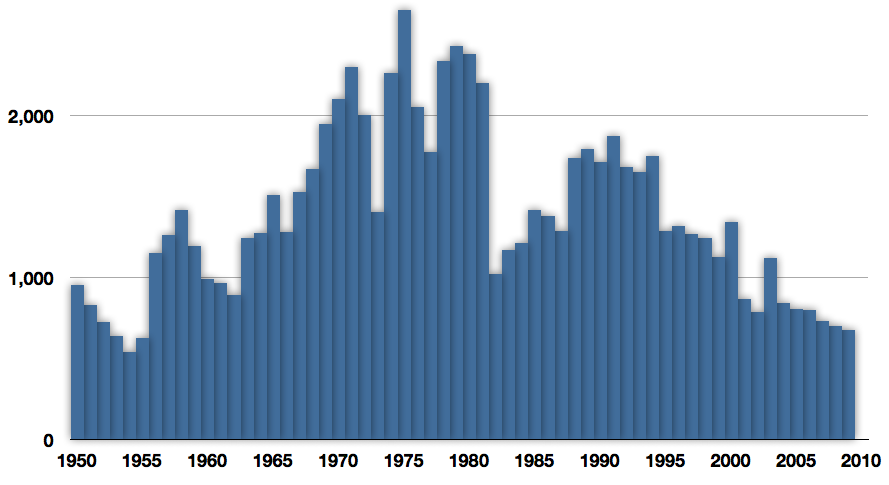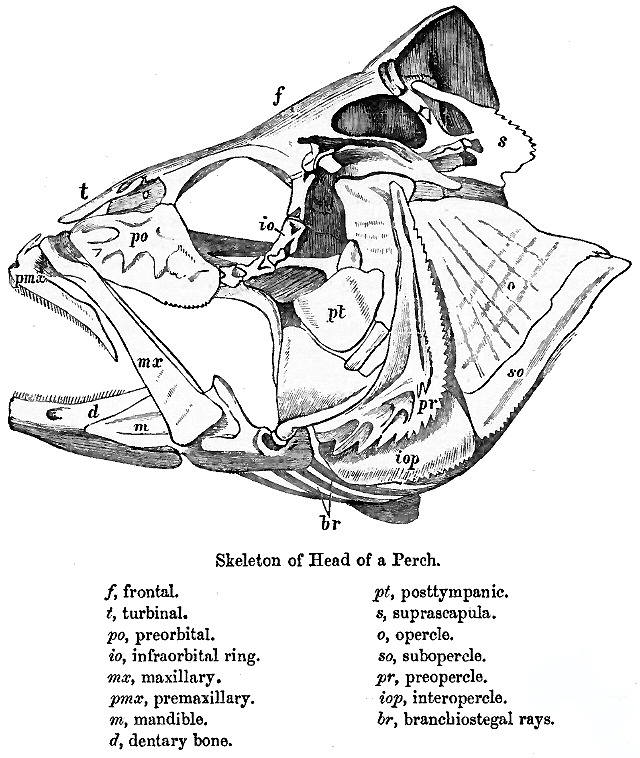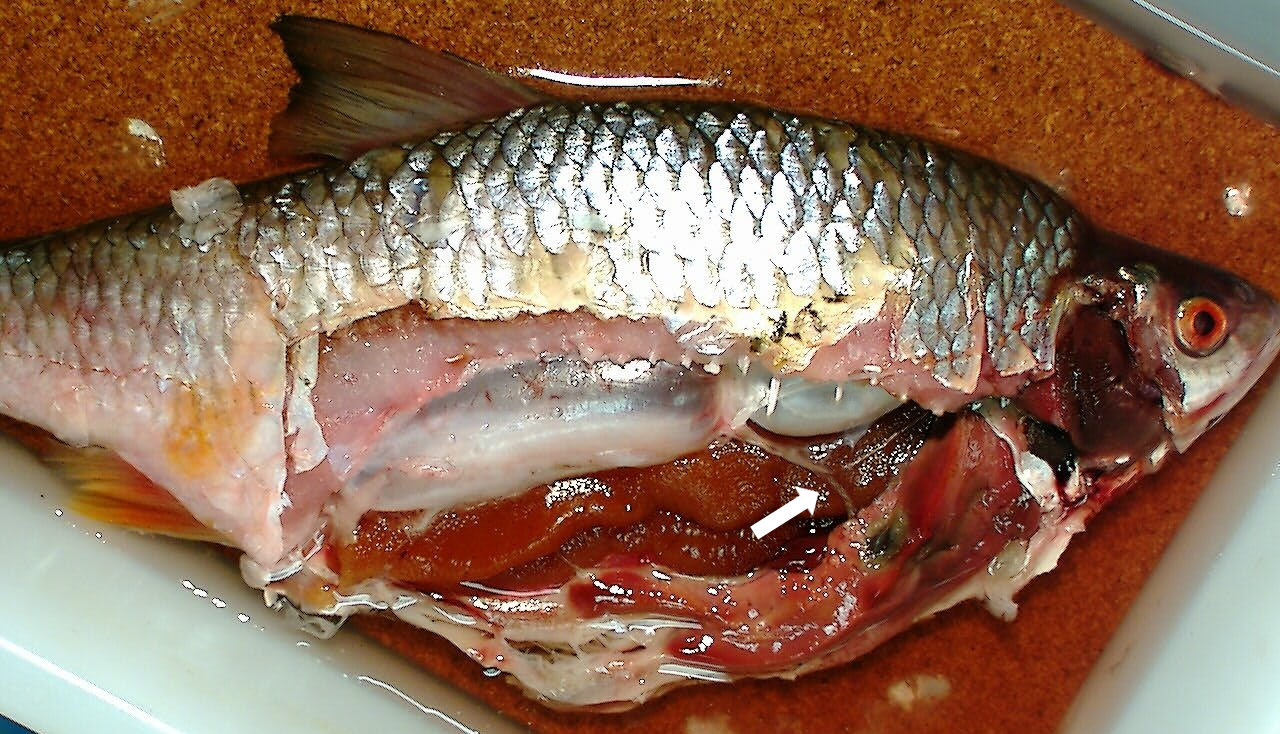|
Anguillicoloides Crassus
''Anguillicoloides crassus'' is a parasitic nematode worm that lives in the swimbladders of eels (''Anguilla'' spp.) and appears to spread easily among eel populations after introduction to a body of water. It is considered to be one of the threats to the sustainability of populations of European eel (''Anguilla anguilla''). It was introduced to the European continent in the 1980s, where it was reported independently from Germany and Italy in 1982, having probably been introduced from Taiwan. It is thought to have reached England in 1987 from continental Europe. It is a natural parasite of the Japanese eel in its native range. The life cycle of ''Anguillicoloides crassus'' begins when the adult nematode releases thousands of eggs in the eel's swimbladder. The eggs pass through the eel's digestive tract and the larvae emerge in the water and settle onto the substrate. They are ingested by their intermediate host, which is often a copepod or other crustacean but may also be a fish. ... [...More Info...] [...Related Items...] OR: [Wikipedia] [Google] [Baidu] |
Japanese Journal For Parasitology
Japanese may refer to: * Something from or related to Japan, an island country in East Asia * Japanese language, spoken mainly in Japan * Japanese people, the ethnic group that identifies with Japan through ancestry or culture ** Japanese diaspora, Japanese emigrants and their descendants around the world * Japanese citizens, nationals of Japan under Japanese nationality law ** Foreign-born Japanese, naturalized citizens of Japan * Japanese writing system, consisting of kanji and kana * Japanese cuisine, the food and food culture of Japan See also * List of Japanese people * * Japonica (other) * Japanese studies , sometimes known as Japanology in Europe, is a sub-field of area studies or East Asian studies involved in social sciences and humanities research on Japan. It incorporates fields such as the study of Japanese language, history, culture, litera ... {{disambiguation Language and nationality disambiguation pages ... [...More Info...] [...Related Items...] OR: [Wikipedia] [Google] [Baidu] |
Buoyancy
Buoyancy (), or upthrust, is the force exerted by a fluid opposing the weight of a partially or fully immersed object (which may be also be a parcel of fluid). In a column of fluid, pressure increases with depth as a result of the weight of the overlying fluid. Thus, the pressure at the bottom of a column of fluid is greater than at the top of the column. Similarly, the pressure at the bottom of an object submerged in a fluid is greater than at the top of the object. The pressure difference results in a net upward force on the object. The magnitude of the force is proportional to the pressure difference, and (as explained by Archimedes' principle) is equivalent to the weight of the fluid that would otherwise occupy the submerged volume of the object, i.e. the Displacement (fluid), displaced fluid. For this reason, an object with average density greater than the surrounding fluid tends to sink because its weight is greater than the weight of the fluid it displaces. If the objec ... [...More Info...] [...Related Items...] OR: [Wikipedia] [Google] [Baidu] |
Internet Archive
The Internet Archive is an American 501(c)(3) organization, non-profit organization founded in 1996 by Brewster Kahle that runs a digital library website, archive.org. It provides free access to collections of digitized media including websites, Application software, software applications, music, audiovisual, and print materials. The Archive also advocates a Information wants to be free, free and open Internet. Its mission is committing to provide "universal access to all knowledge". The Internet Archive allows the public to upload and download digital material to its data cluster, but the bulk of its data is collected automatically by its web crawlers, which work to preserve as much of the public web as possible. Its web archiving, web archive, the Wayback Machine, contains hundreds of billions of web captures. The Archive also oversees numerous Internet Archive#Book collections, book digitization projects, collectively one of the world's largest book digitization efforts. ... [...More Info...] [...Related Items...] OR: [Wikipedia] [Google] [Baidu] |
Journal Of Applied Ichthyology
The ''Journal of Applied Ichthyology'' is a peer-reviewed scientific journal on ichthyology, marine biology, and oceanography published by Wiley-Blackwell. It is the official journal of the World Sturgeon Conservation Society and of the Deutsche Wissenschaftliche Kommission für Meeresforschung ("German Scientific Commission for the Exploration of the Sea"). The editor-in-chief is Christian Wolter. The ''Journal of Applied Ichthyology'' was established as a separate journal in 1985, but merged with the ''Archive of Fishery and Marine Research'' in 2005. The latter journal had been established as ''Berichte der Deutschen Wissenschaftlichen Kommission für Meeresforschung'', published from before World War I World War I or the First World War (28 July 1914 – 11 November 1918), also known as the Great War, was a World war, global conflict between two coalitions: the Allies of World War I, Allies (or Entente) and the Central Powers. Fighting to ... (with a hiatus for the ... [...More Info...] [...Related Items...] OR: [Wikipedia] [Google] [Baidu] |
Sargasso Sea
The Sargasso Sea () is a region of the Atlantic Ocean bounded by four currents forming an ocean gyre. Unlike all other regions called seas, it is the only one without land boundaries. It is distinguished from other parts of the Atlantic Ocean by its characteristic brown '' Sargassum'' seaweed and often calm blue water. The sea is bounded on the west by the Gulf Stream, on the north by the North Atlantic Current, on the east by the Canary Current, and on the south by the North Atlantic Equatorial Current, the four together forming a clockwise-circulating system of ocean currents termed the North Atlantic Gyre. It lies between 20° and 35° north and 40° and 70° west and is approximately wide by long. Bermuda is near the western fringes of the sea. While all of the above currents deposit marine plants and refuse into the sea, ocean water in the Sargasso Sea is distinctive for its deep blue color and exceptional clarity, with underwater visibility of up to . It is als ... [...More Info...] [...Related Items...] OR: [Wikipedia] [Google] [Baidu] |
American Eel
The American eel (''Anguilla rostrata'') is a facultative catadromous eel found on the eastern coast of North America. Anguillidae, Freshwater eels are fish belonging to the Elopomorpha, elopomorph superorder, a group of Phylogenetics, phylogenetically ancient teleosts. The American eel has a slender, supple, snake-like body that is covered with a mucus layer, which makes the eel appear to be naked and slimy despite the presence of minute Fish scale, scales. A long dorsal fin runs from the middle of the back and is continuous with a similar ventral fin. Pelvic fins are absent, and relatively small pectoral fin, pectoral fins can be found near the midline, followed by the head and gill covers. Variations exist in coloration, from olive green, brown shading to greenish-yellow and light gray or white on the belly. Eels from clear water are often lighter than those from dark, Blackwater river, tannic acid streams. The eel lives in fresh water and estuaries and only leaves these habi ... [...More Info...] [...Related Items...] OR: [Wikipedia] [Google] [Baidu] |
Teleostei
Teleostei (; Ancient Greek, Greek ''teleios'' "complete" + ''osteon'' "bone"), members of which are known as teleosts (), is, by far, the largest group of ray-finned fishes (class Actinopterygii), with 96% of all neontology, extant species of fish. The Teleostei, which is variously considered a Division (zoology), division or an infraclass in different taxonomic systems, include over 26,000 species that are arranged in about 40 order (biology), orders and 448 family (biology), families. Teleosts range from giant oarfish measuring or more, and ocean sunfish weighing over , to the minute male anglerfish ''Photocorynus spiniceps'', just long. Including not only torpedo-shaped fish built for speed, teleosts can be flattened vertically or horizontally, be elongated cylinders or take specialised shapes as in anglerfish and seahorses. The difference between teleosts and other bony fish lies mainly in their jaw bones; teleosts have a movable premaxilla and corresponding modifications ... [...More Info...] [...Related Items...] OR: [Wikipedia] [Google] [Baidu] |
Physoclistic
The swim bladder, gas bladder, fish maw, or air bladder is an internal gas-filled organ (anatomy), organ in bony fish that functions to modulate buoyancy, and thus allowing the fish to stay at desired water depth without having to maintain lift (force), lift via swimming, which expends more energy. Also, the Dorsum (biology), dorsal position of the swim bladder means that the expansion of the bladder moves the center of mass downwards, allowing it to act as a stabilizing apparatus. Additionally, the swim bladder functions as a resonating chamber (anatomy), resonating chamber to produce or receive sound. The swim bladder is evolutionarily homology (biology), homologous to the lungs of tetrapods and lungfish, and some ray-finned fish such as bowfins have also evolved similar respiratory functions in their swim bladders. Charles Darwin remarked upon this in ''On the Origin of Species'', and reasoned that the lung in air-breathing vertebrates had derived from a more primitive swim b ... [...More Info...] [...Related Items...] OR: [Wikipedia] [Google] [Baidu] |
Physostome
Physostomes are fishes that have a pneumatic duct connecting the gas bladder to the alimentary canal. This allows the gas bladder to be filled or emptied via the mouth. This not only allows the fish to fill their bladder by gulping air, but also to rapidly ascend in the water without the bladder expanding to bursting point. In contrast, fish without any connection to their gas bladder are called physoclisti. The physostome fish encompass the bichirs, gars, a number of carps, trouts, herrings, catfish, eels and the lungfish. While the gas bladder in fish mainly serves as a buoyancy organ, some physostomes (though not all) can use their gas bladder as a lung The lungs are the primary Organ (biology), organs of the respiratory system in many animals, including humans. In mammals and most other tetrapods, two lungs are located near the Vertebral column, backbone on either side of the heart. Their ..., allowing them to live from atmospheric oxygen in conditions where aqu ... [...More Info...] [...Related Items...] OR: [Wikipedia] [Google] [Baidu] |
Paratenic
In biology and medicine, a host is a larger organism that harbours a smaller organism; whether a parasitic, a mutualistic, or a commensalist ''guest'' (symbiont). The guest is typically provided with nourishment and shelter. Examples include animals playing host to parasitic worms (e.g. nematodes), cells harbouring pathogenic (disease-causing) viruses, or a bean plant hosting mutualistic (helpful) nitrogen-fixing bacteria. More specifically in botany, a host plant supplies food resources to micropredators, which have an evolutionarily stable relationship with their hosts similar to ectoparasitism. The host range is the collection of hosts that an organism can use as a partner. Symbiosis Symbiosis spans a wide variety of possible relationships between organisms, differing in their permanence and their effects on the two parties. If one of the partners in an association is much larger than the other, it is generally known as the host. In parasitism, the parasite benefits at ... [...More Info...] [...Related Items...] OR: [Wikipedia] [Google] [Baidu] |
Spawn (biology)
Spawn is the eggs and sperm released or deposited into water by aquatic animals. As a verb, ''to spawn'' refers to the process of freely releasing eggs and sperm into a body of water (fresh or marine); the physical act is known as spawning. The vast majority of aquatic and amphibious animals reproduce through spawning. These include the following groups: * Bony fishes * Crustaceans (such as crabs, shrimps, etc.) *Mollusks (such as oysters, octopus, squid) *Echinoderms (such as sea urchins, sea stars, sea cucumbers, etc.) * Amphibians (such as frogs, toads, salamanders, newts) * Aquatic insects (such as dragonflies, mayflies, mosquitoes) *Coral, which are living colonies of tiny, aquatic organisms—not plants, as they are sometimes perceived to be. Corals, while appearing sedentary or botanical by nature, actually spawn by releasing clouds of sperm and egg cells into the water column, where the two mix. As a general rule, aquatic or semiaquatic reptiles, birds, ... [...More Info...] [...Related Items...] OR: [Wikipedia] [Google] [Baidu] |





